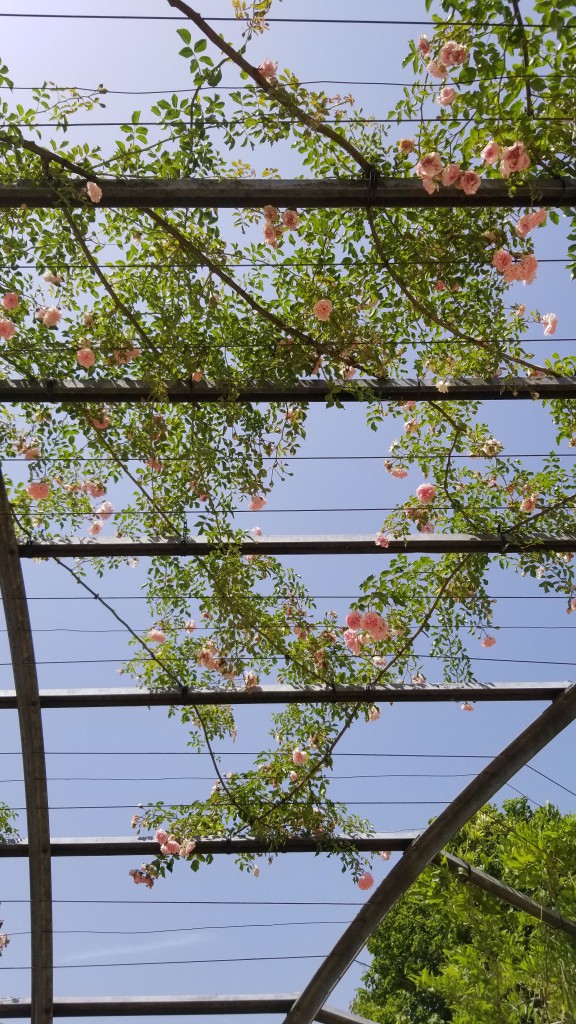Roses can be a wonderful and traditional addition to any home garden. Their large, fragrant blooms can be cheery and dramatic. But did you know that there are actually several different types of roses? Each one has a different growth habit (or shape) and use in garden landscaping. Roses prefer full sun. Many of the varieties that come to mind are considered a “bush” rose.
Bush roses can reach over 6 ft in height and do not require any support. They come in a wide variety of colors, types, and flowering habits.
- Hybrid Teas- the most frequently used type for cut flowers.
- Floribundas- create dense clusters of tiny flowers.
- Grandifloras- similar to hybrid teas but with smaller flowers.
- Old fashioned roses- include many traditional European varieties.
- Standard (tree) roses- Tall, upright form of grafted branches on a trunk.

Author’s own photos of climbing roses trained to an arbor. 
A different kind of rose is the climbing rose. Climbing roses require supports to hold their long canes. They can be trained to a trellis or fence. They are typically very hardy and can become extremely large, making them excellent candidates to cover an arbor or fence. Some bloom continuously (floribunda, polyanthas, climbing hybrid teas), frequently (everblooming), or once a year (ramblers). Early spring is a good time of year to plant bare- rooted rose plants.
Some recommended climbing varieties: New Dawn (pink), Cecil Bruner (white)
No discussion on roses would be complete without talking about Rose Rosette Virus. This disease is spread by airborne mites from plant to plant. Infected plants do not recover and must be removed from the landscape to prevent spreading the disease to neighboring roses or host plants. The wild multiflora rose is often an unseen host for the mites growing in ditches or weedy areas. For more information on Rose Rosette Virus, see the following publication: https://secure.caes.uga.edu/extension/publications/files/pdf/C%201176_2.PDF
For additional information on roses, contact your local extension office at (404) 613- 7670.